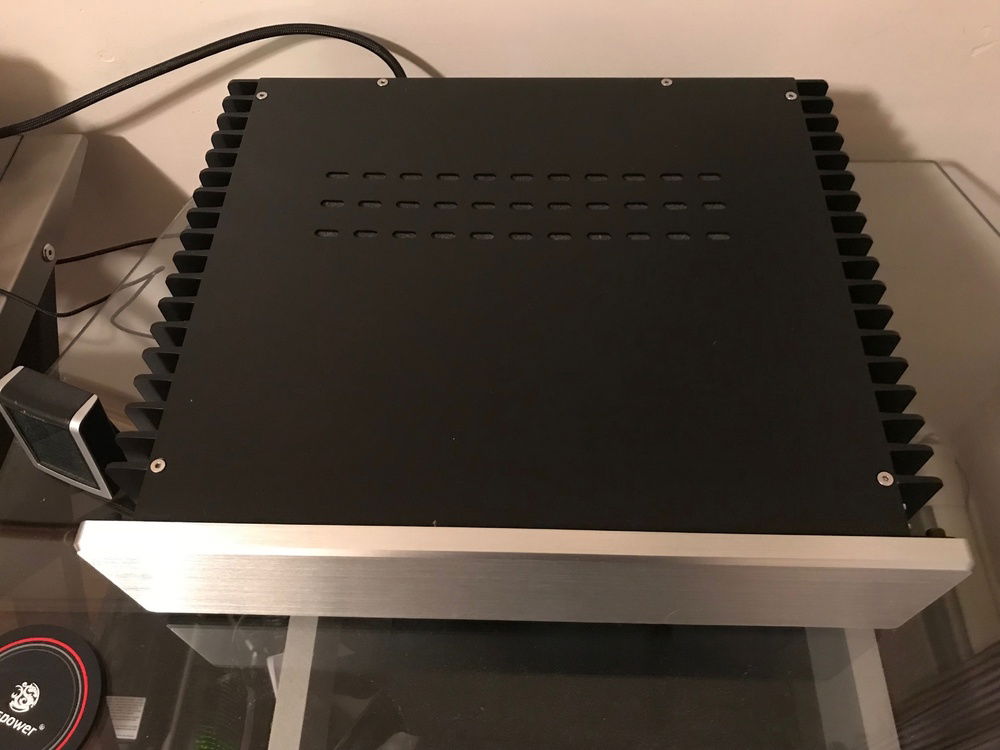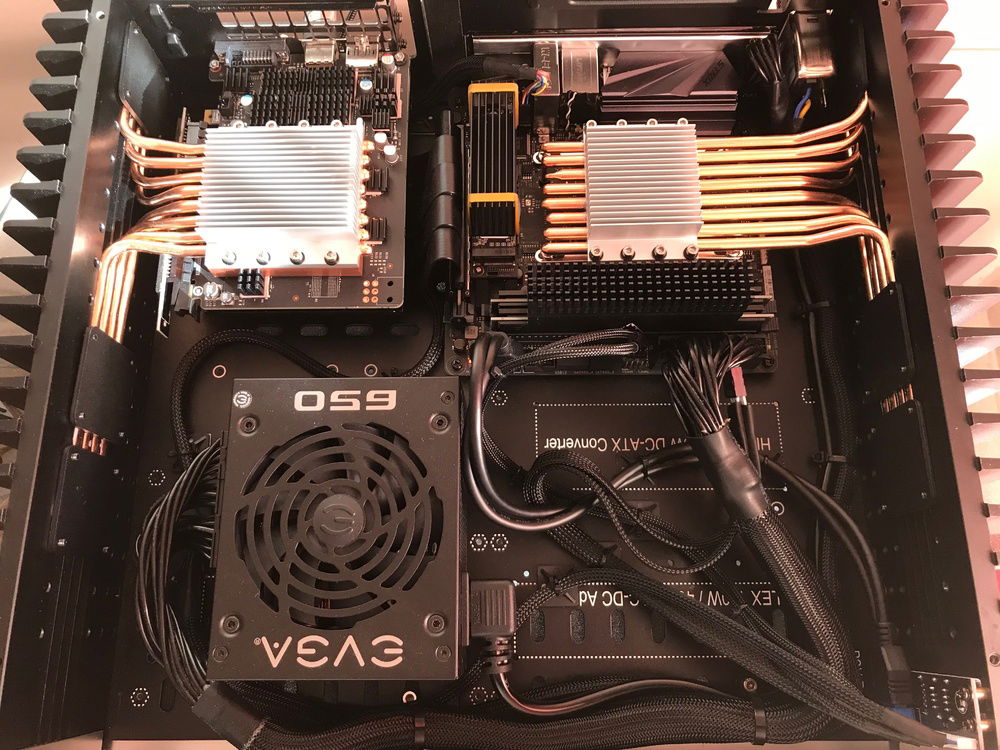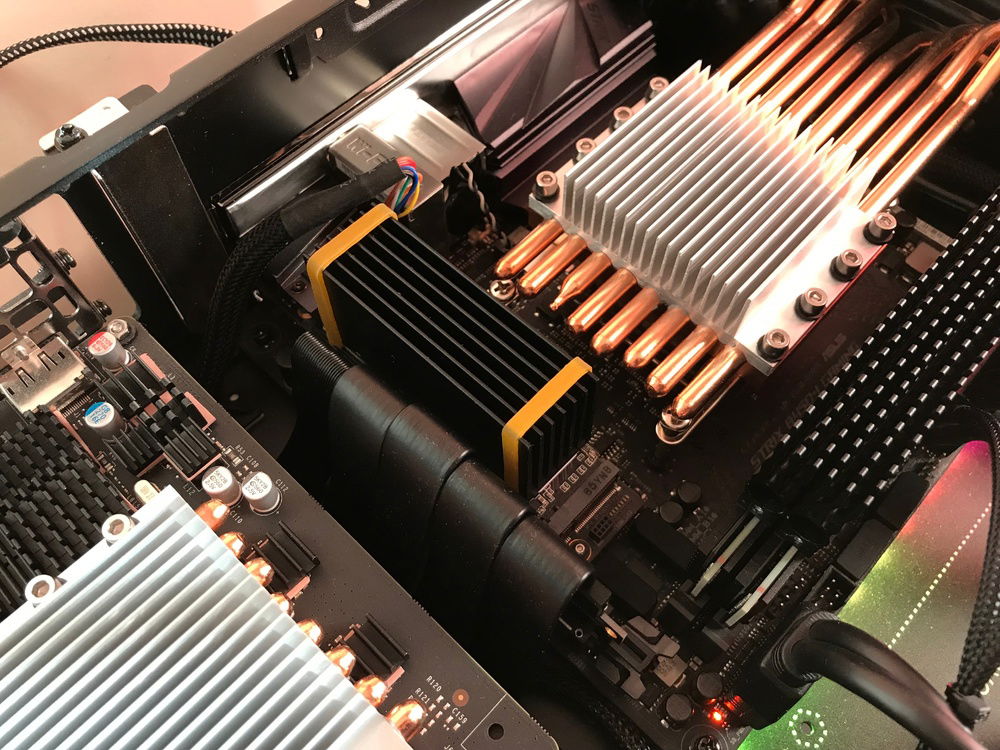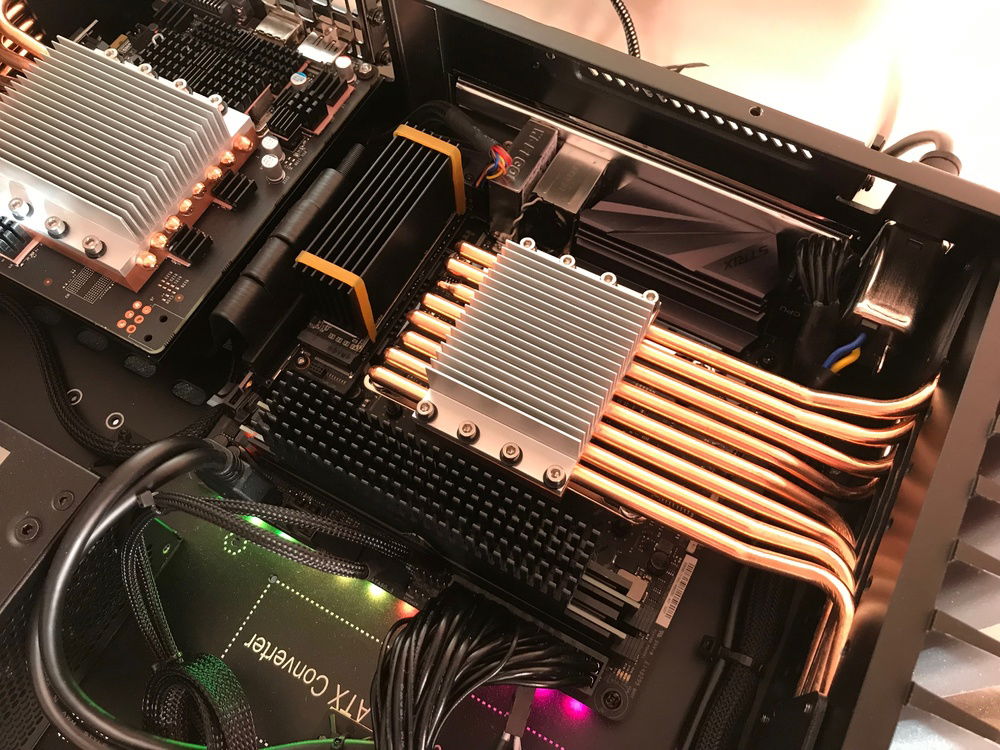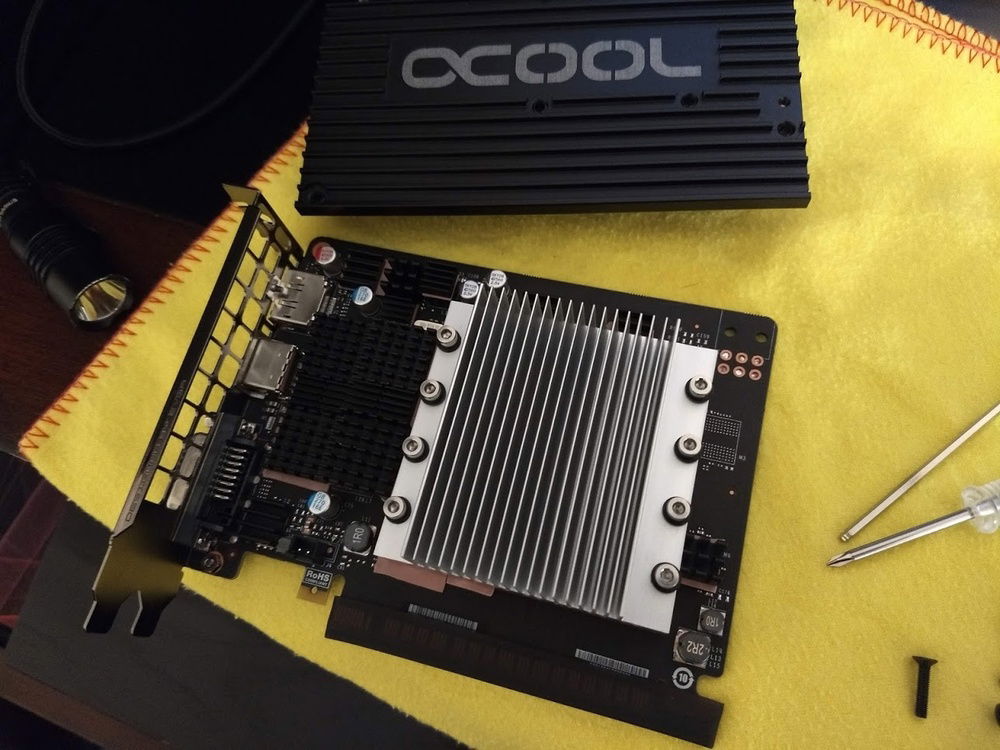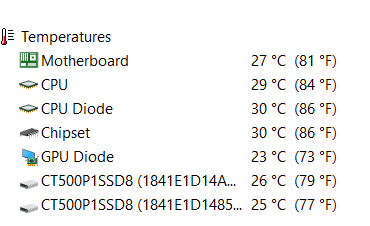HDplex B450 Passive Cooled Build
This was my first passively cooled PC I built. I used an HDplex 2nd Gen Passive case. All thermal pads (VRM, Chipset, VRAM, bottom of PSU) where replaced with Arctic 6w/mk pads and Grizzly Minus 8 series 8w/mk pads. Noctua NT H1 was used only all the copper pipes along with on the GPU and CPU. Each heatsink side panel of the HDplex can handle parts up to 95w TDP, the 1050 3GB is a 75w TDP part along with the 2600 being a 65w TDP, making them a perfect match for this kind of cooling. System stays very cool for 0 airflow CPU (R5 2600) will max out at around 50c while the GPU (1050 3GB) will sit at 30c. The 1050 3GB card also uses an Alphacool GPX backplate with 3mm thermal pads to help transfer some of the heat away I used an aftermarket heatsink for the P1 NVMe on the top of the board and it stays around 35c with the back P1 NVMe thermally connected to the bottom of the case. RAM sticks have Phobya aftermarket heatsinks on them. Thanks to only NVMe storage the system boots up super fast. The front I/O cables I sleeved, only issue is the USB one which I have to rewire. Inside the top cover and bottom of the case, I applied dust filters to help keep out any dust from the system. System is connected to a CyberPower CP1000PFCLCD 600w unit. System only uses 78w~ so the PSU fan never turns on, a true 0dB system!
Color(s): Black
RGB Lighting? No
Theme: none
Cooling: Passive Cooling
Size: Mini-ITX
Type: General Build
Hardware
CPU
$ 99.99
Motherboard
$ 325.86
Graphics
PSU
$ 299.99
Case
Approved by:
